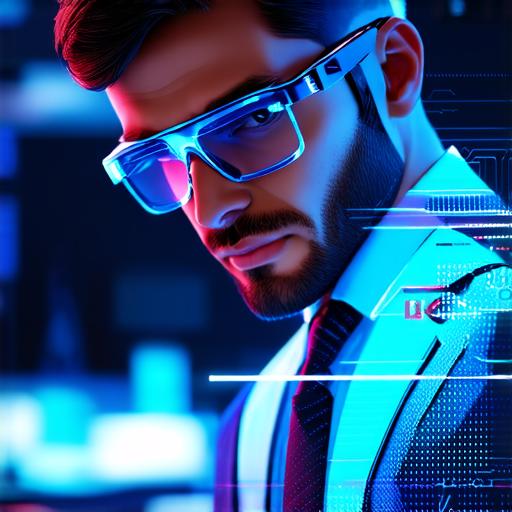Part 1: Understanding Augmented Reality

Before diving into the technical aspects of creating AR elements, it’s essential to understand what augmented reality is and how it works. At its core, AR involves overlaying digital information onto real-world environments using a camera or other sensor device.
There are several key components to an effective AR experience:
- Camera and Sensor Devices: The first essential component of an AR experience is a camera or sensor device that can capture the real-world environment. This can be a smartphone camera, a dedicated AR device, or even a computer with a webcam.
- 3D Modeling and Animation: The second essential component is 3D modeling and animation software. This software allows AR developers to create digital assets that can be overlaid onto the real-world environment.
- Tracking and Positioning: The third essential component is tracking and positioning technology. This technology allows AR applications to accurately track the user’s location and orientation in real-time, enabling the overlay of digital assets onto the physical environment.
- User Interface Design: The fourth essential component is user interface design. AR applications must be intuitive and easy to use, with clear and concise instructions for the user.
Part 2: Creating Augmented Reality Elements for Mobile Apps
Now that we have a basic understanding of AR, let’s explore how to create augmented reality elements specifically for mobile apps. There are several different approaches you can take when creating AR for mobile apps, including:
Marker-Based AR
Marker-based AR involves placing physical markers in the real-world environment that are recognized by the AR application. When the user scans the marker with their smartphone camera, the AR application overlays digital assets onto the marker, creating an interactive experience. Marker-based AR is a popular approach for mobile apps, as it allows for easy and accurate tracking of physical objects.
Image Recognition AR
Image recognition AR involves training the AR application to recognize specific images in the real-world environment. When the user scans an image with their smartphone camera, the AR application overlaays digital assets onto the image, creating an interactive experience. Image recognition AR is particularly useful for applications that require a high level of accuracy and precision, such as medical diagnosis or product inspection.
GPS-Based AR
GPS-based AR involves using the device’s GPS to track the user’s location in real-time. This allows the AR application to overlay digital assets onto the physical environment based on the user’s current location. GPS-based AR is particularly useful for applications that require a high level of accuracy and precision, such as navigation or geolocation-based services.
Part 3: Creating Augmented Reality Elements for Websites
AR can also be integrated into websites to create immersive and interactive experiences for users. There are several different approaches you can take when creating AR for websites, including:
Web-Based AR
Web-based AR involves using web technologies such as HTML5, CSS3, and JavaScript to create AR experiences on a website. These technologies allow developers to create interactive elements that respond to user input and can be overlaid onto the real-world environment using the device’s camera or sensor device.
Unity AR
Unity AR involves using the Unity game engine to create AR experiences on a website. Unity is a popular and powerful game engine that allows developers to create complex and immersive experiences. Unity AR can be used to create AR experiences for e-commerce websites, product demos, or even interactive advertisements.
Part 4: Creating Augmented Reality Elements for Physical Installations
AR can also be used to create interactive installations in physical environments, such as museums, galleries, or retail spaces. These installations can range from simple visual effects to complex interactive experiences that blend the physical and virtual worlds.
When creating AR installations, there are several key considerations to keep in mind:
- Tracking and Positioning: AR installations require accurate tracking and positioning technology to ensure that digital assets are overlaid onto the real-world environment in the correct location. This can be achieved using a variety of methods, such as marker-based AR or image recognition AR.
- User Experience: AR installations should be designed with the user experience in mind. This includes creating intuitive interfaces and ensuring that the installation is easy to navigate and use.
- Content Creation: Creating content for AR installations requires specialized skills and expertise. Developers must be able to create high-quality 3D models and animations that are optimized for AR environments.
Summary
AR is a powerful tool that can be used to create immersive and interactive experiences for mobile apps, websites, and physical installations. By understanding the different approaches to creating AR elements and considering the user experience, developers can create engaging and effective AR experiences that blend the physical and virtual worlds.
